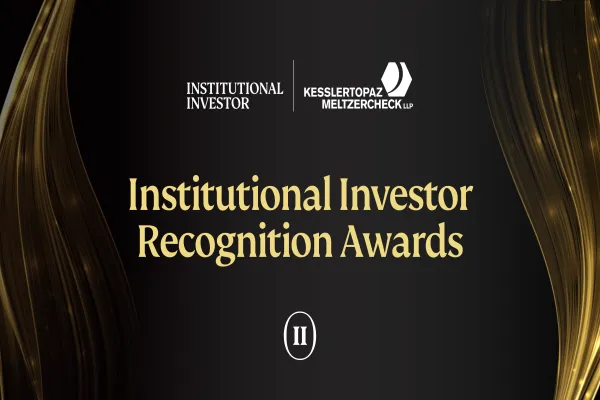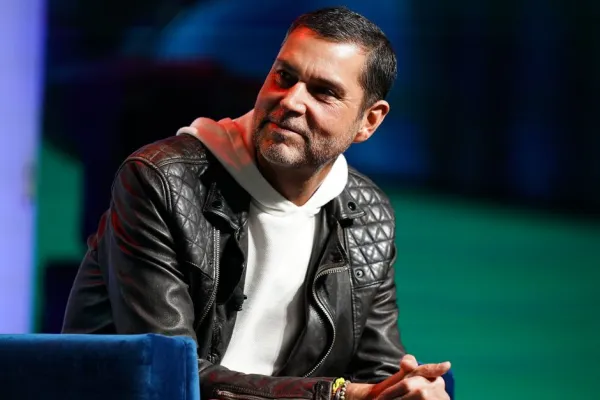In its quest for fully automated straight-through processing -- which aims to eliminate human intervention from every step of stock and bond trading, clearing and settlement -- the international securities industry has struck out in several directions. Underscore "struck out."
In the mid-1990s the industry developed electronic trade confirmation, a system for verifying that an institutional investor's order had been properly executed and allocated. That was a key advance in accelerating trade processing and eliminating costly manual-handling errors, but it didn't prevent glitches and delays at other steps along the way to final settlement.
In an attempt to find a more sweeping solution, more than 100 of the world's top brokerages, investment managers and custodians in 1998 formed the Global Straight Through Processing Association. The group's goal was to create a trade-matching utility, a centralized database for managing many of the presettlement processes -- such as the flagging of data discrepancies and tracking the status of orders -- that firms struggled to handle on their own. But the GSTPA wasn't able to keep pace with changes in technology or satisfy its diversified membership's varied needs, and the association disbanded a year ago. An alternative utility, developed by the Thomson FinancialDepository Trust and Clearing Corp. joint venture Omgeo, has attracted only a handful of clients.
Reluctant to embrace such broadscale initiatives, the industry is turning to an overlooked pinch hitter: trade order management systems. Virtually all major buy-side firms -- plus a growing number of smaller fund managers, which have been particularly reluctant to spend money on technologies with uncertain returns on investment -- have an OMS. Recent enhancements to these systems -- introduced in the 1980s to help investment managers route and keep tabs on equity orders -- deliver many of the benefits of STP, without the hassle or complexity of an industrywide standardization effort.
"A lot of firms feel that they have the answer for STP already in place," says Christopher Blume, who is in charge of custodian and fund accounting reconciliation at Deutsche Asset Management in New York. "It may be limited in scope, but it works," adds Blume, who headed a Securities Industry Association subcommittee that completed a report last month on buy-side STP issues.
Buy-side miserliness has been blamed not only for the tepid response to central matching but also for the SIA's indefinite postponement last year of the most ambitious STP project of all: shortening the equities settlement timetable to trade date plus one day, or T+1, from the current T+3. "Let's face it," says Blume, "the buy side was asked to bear the greatest cost [of T+1] and felt the savings wouldn't have been equitably shared" by brokerages and custodians.
But now, says Jorge Reyes, New York based vice president of industry solutions for STP systems company Black Pearl, "asset managers are taking serious steps to automate and upgrade their operations, and OMS is a focal point for them."
Notes Thomas Driscoll, vice president of sales and marketing at OMS provider Charles River Development, "There is a compelling argument that there is a payback."
The cost of these systems has come down, and their compatibility with other essential components of portfolio management and accounting, trade matching and reconciliation has greatly improved. That's thanks to vigorous competition among a crowd of technology developers, including longtime specialists in OMS software like Charles River and Macgregor, both in the Boston area, and Paris-based Linedata Services; and portfolio accounting and asset management systems giants like San Franciscobased Advent Software and SunGard Data Systems' investment management group. Sophisticated OMS capabilities are also embedded in the Bloomberg and Reuters trading networks.
Although order management systems weren't designed to deliver all the aspects of end-to-end automation that GSTPA originally sought to provide, in practice they come close. The more effective these systems become at linking buy-side firms with their internal accounting systems and with clients, brokerages, exchanges, electronic communications networks and custodians, the closer STP comes to being a reality.
The attraction, according to William Penney, director of product management at Advent Software, is that "an OMS can drive down the number of trades that include a manual element, which makes trading more of a strategic profit center, rather than a cost center."
The profit motive prompted Edinburgh, Scotlandbased First State Investments to bank on OMS. Stuart Paul, chief information officer and chief operating officer of the Commonwealth Bank of Australia subsidiary, says First State relies on its Charles River software for everything from pretrade compliance -- assuring that portfolios are being managed according to clients' specifications -- to attaining best execution, making the most efficient trade at the best available price. First State has £36 billion ($60 billion) under management worldwide.
"The system takes the burden away from portfolio managers," says Paul, "allowing them to think about the investment itself, rather than being a bookkeeper. Also, if you can automate most of the calculations, the scope for human error is decreased."
Pat Morris, head trader of $6 billion-in-assets Chicago Equity Partners, which bought Macgregor technology last year, credits the software with providing his firm with "gains in liquidity, productivity and efficiency."
Roughly 2,000 trades a month, 95 percent of Chicago Equity's total, are executed electronically using the Macgregor FIX Network, which links buy- and sell-side firms subscribing to the Financial Information Exchange protocol. "We are able to trade electronically with all 34 of our brokers simultaneously," says Morris. "This level of liquidity and automation is helping us to achieve best execution and has completely eliminated trading errors."
Kevin Milne, head of Macgregor's international operations in London, says that new regulations making fund managers more accountable for achieving best execution are spurring customer inquiries. "Buy-side firms have to show that they have access to a good number of trading venues, many of which are electronic only," says Milne. "We are seeing a marked increase in interest from organizations that do not have an OMS, or from those that may have one that is deemed not good enough for this purpose."
Most of the OMS effort to date has been geared toward equities trading, but both technology providers and customers are experimenting with bond-friendly systems.
Some investment managers have tried to adapt equity OMSs for fixed-income trading, only to find that they don't work as well. System vendors, too, have had mixed success at retrofitting equities-oriented software, says Todd Eyler, research director in the capital markets group at Framingham, Massachusettsbased research firm Financial Insights.
What's lacking are quick and efficient ways to search out securities that meet a firm's investment goals. Because outstanding fixed-income securities far outnumber available stocks, "the data requirements for analysis are much greater than in the equities world, and many of these [equity-oriented] systems lack the ability to store the information," notes Charles River's Driscoll.
"Equities OMS users are buy-side traders, and their systems revolve around trade capture," says analyst Eyler. "In fixed income the focus is on portfolio managers who are more analysis-driven" -- they're looking for a hub that allows them to monitor their positions, price bonds and communicate with internal analysts and traders.
As is true in equities trading, pressures for cost reduction and best execution are pushing OMS developers to come up with products tailored for bonds. Also raising interest: growing acceptance of the FIX protocol, which in recent months has been modified to better accommodate electronic bond trading.
As always, companies are scrambling to fill the technology gap. Some OMS providers, such as privately held Charles River, have traditionally focused on compliance and trade management products; SunGard, by contrast, is a $2.6 billion-in-revenues financial systems conglomerate working in many areas. But the two companies' strategies converge in the OMS arena.
Charles River, with 105 clients, touts end-to-end capabilities through modules in its trading system for portfolio management, order execution, posttrade processing and compliance.
SunGard, which serves 16,000 customers in its investment support group, has built STP into its business model. Firms willing to buy the whole package can get everything from pretrade compliance and risk management to accounting and reconciliation at the back end.
But in describing the OMS component -- called Decalog -- SunGard senior vice president of distribution Juerg Hunziker sounds a common refrain. "It's not just order management," he insists. "It has separate modules -- portfolio management, compliance and real-time performance measurement." If Decalog and rival products can find an audience, the international securities business may finally have ended its long hitless streak in attempting to achieve fully automated trade processing.





